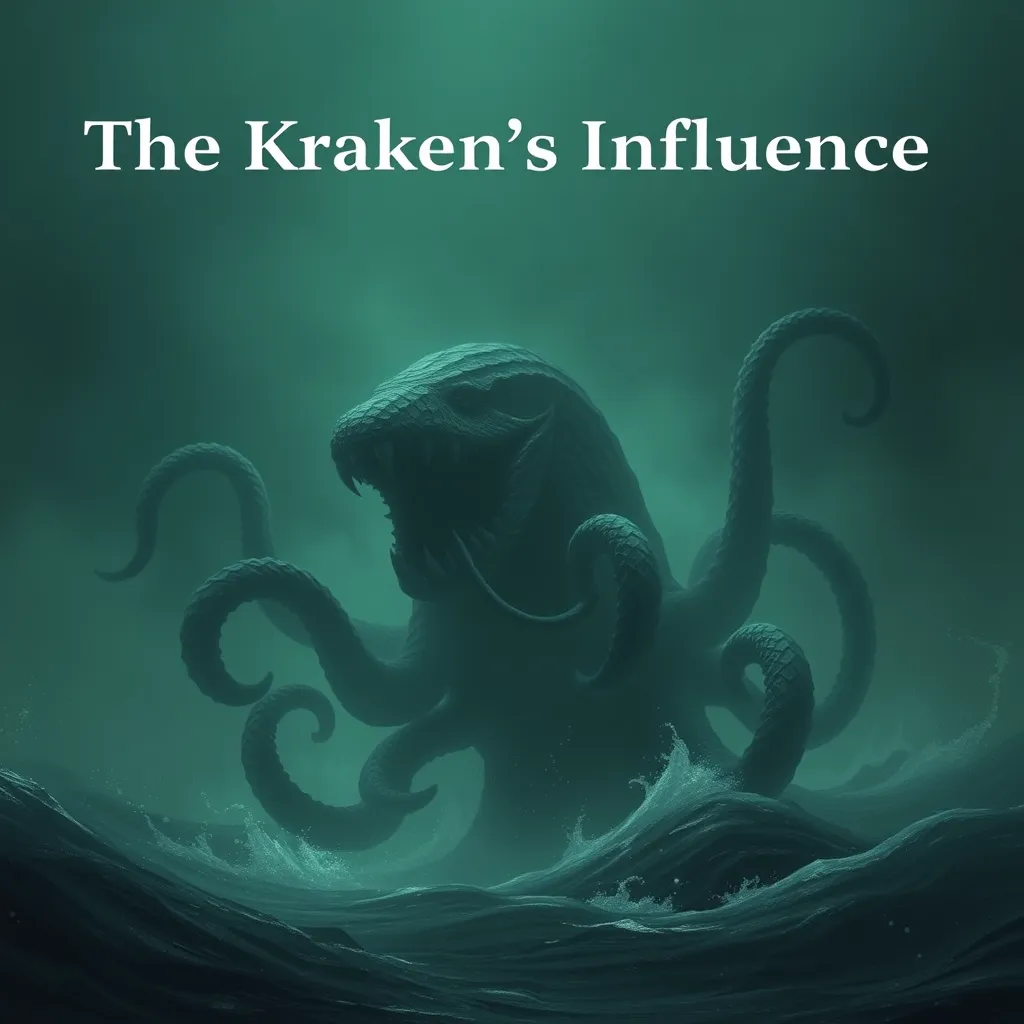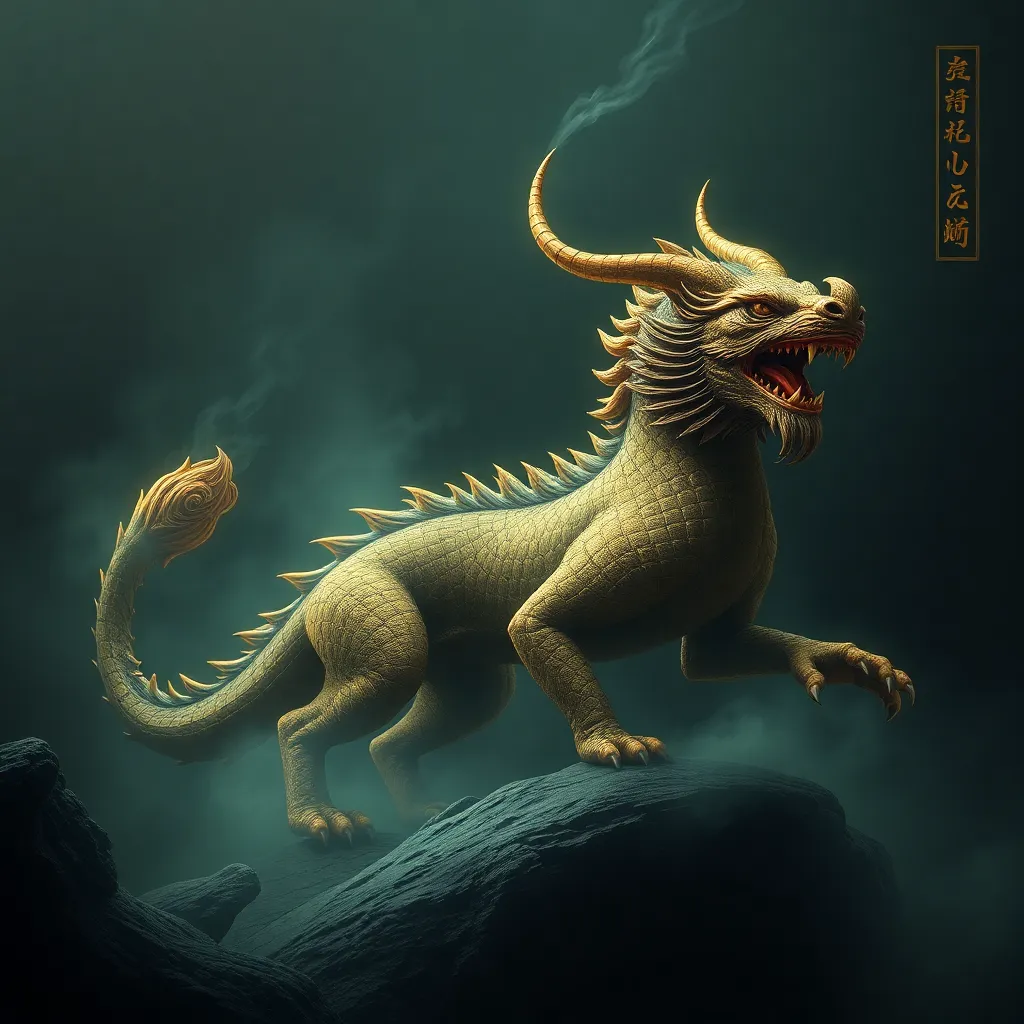The Kraken’s Influence: Examining the Monster’s Impact on Art, Literature, and Film
I. Introduction
The Kraken, a legendary sea monster, has intrigued and terrified people for centuries. Often depicted as a vast, tentacled creature lurking beneath the waves, the Kraken’s origins can be traced back to Scandinavian folklore, where it was said to inhabit the waters off the coasts of Norway and Greenland. This mythical beast has transcended its maritime roots, becoming a significant cultural icon in popular culture.
Today, the Kraken’s influence extends beyond folklore into various artistic mediums, leaving an indelible mark on literature, visual arts, and film. This article aims to explore the multifaceted influence of the Kraken, examining how this mythological creature has inspired artists and creators throughout history.
II. The Kraken in Mythology and Folklore
The Kraken legend is steeped in historical accounts and has evolved over time. Originally described in the 1700s by Francesco Negri, an Italian priest, the Kraken was said to be a giant octopus that terrorized sailors, dragging ships and their crews to the depths of the ocean.
The cultural significance of the Kraken in maritime communities cannot be overstated. For sailors, the Kraken represented the uncontrollable forces of nature, embodying their fears of the deep sea. Over time, the legend has evolved, morphing into a symbol of the mysteries of the ocean, as well as a cautionary tale about the dangers of venturing too far from shore.
III. The Kraken in Literature
The Kraken has made numerous appearances in literature, both in early texts and contemporary works. Notable early references include:
- “The Voyage of the Dawn Treader” by C.S. Lewis: In this classic fantasy novel, a sea creature resembling the Kraken is encountered by the protagonists, adding to the sense of adventure and danger.
- Alfred Lord Tennyson’s The Kraken: This poem personifies the Kraken as a dormant force, stirring beneath the waves, symbolizing the power and mystery of the sea.
In contemporary literature, the Kraken has found its place in fantasy and horror genres, often symbolizing chaos and the unknown. Authors utilize the creature to explore themes such as fear, the subconscious, and the battle between civilization and nature.
IV. The Kraken in Visual Arts
Historically, the Kraken has been depicted in various forms of visual art. Early representations can be found in:
- Classical paintings and illustrations: Artists like Gustave Doré have created intricate illustrations of the Kraken, capturing its monstrous essence.
- Influence on cartography and sea maps: The Kraken often appeared on maps of the time, marking uncharted territories, signifying the dangers lurking in the unknown parts of the ocean.
In modern artistic interpretations, the Kraken continues to inspire:
- Digital art and graphic novels: Artists employ vibrant colors and imaginative designs to reinterpret the Kraken in contemporary styles.
- The Kraken as a symbol in contemporary art movements: The creature is often used to represent themes of environmentalism and the fragility of ocean ecosystems.
V. The Kraken in Film and Television
The Kraken has made notable appearances in film and television, becoming a staple of monster mythology. Noteworthy films include:
- “Pirates of the Caribbean: Dead Man’s Chest”: This blockbuster features a fearsome Kraken that attacks ships, showcasing its terrifying power and adding to the film’s adventurous spirit.
- “Clash of the Titans”: In this adaptation, the Kraken serves as a pivotal monster that embodies the mythological themes of sacrifice and heroism.
Television series have also embraced the Kraken, with appearances in popular shows such as:
- “Game of Thrones”: While not directly named, creatures reminiscent of the Kraken appear, reinforcing the themes of power and the supernatural.
- Animation and family-friendly adaptations: The Kraken has been reimagined in animated films and series, often portrayed as a misunderstood monster, appealing to younger audiences.
VI. The Kraken’s Cultural Impact
Beyond its representation in the arts, the Kraken has become a metaphor in modern discourse:
- Environmental themes and ocean conservation: The Kraken symbolizes the threats faced by marine life and the importance of protecting our oceans.
- The Kraken as a symbol of fear and the unknown: It represents humanity’s fears of nature and the mysteries that lie beneath the surface of the sea.
Additionally, the Kraken has influenced gaming and popular media, appearing in video games and board games, often as a formidable opponent or a quest-giving entity.
VII. The Kraken in Popular Culture Today
Today, the Kraken’s presence is felt in various aspects of popular culture:
- Merchandise and branding inspired by the Kraken: From clothing to home decor, the Kraken is a popular motif that appeals to fans of fantasy and mythology.
- The resurgence of interest in mythical creatures: As society seeks to reconnect with folklore, the Kraken has become a symbol of this growing fascination.
- The role of social media in the Kraken’s popularity: Platforms like Instagram and TikTok have allowed artists and fans to share their interpretations and creations, keeping the legend alive.
VIII. Conclusion
In conclusion, the Kraken’s influence across various fields—from literature to visual arts and film—demonstrates the enduring power of myth in contemporary culture. As a creature that embodies the mysteries of the ocean, the Kraken continues to captivate the imagination, serving as a reminder of nature’s power and the unknown.
As we look to the future, the possibilities for the Kraken’s representation and significance in popular culture remain vast. Whether through new stories, art, or media, the Kraken will undoubtedly continue to inspire and provoke thought for generations to come.



